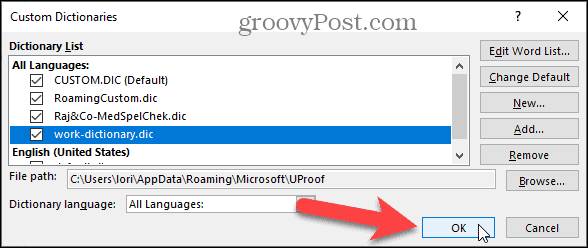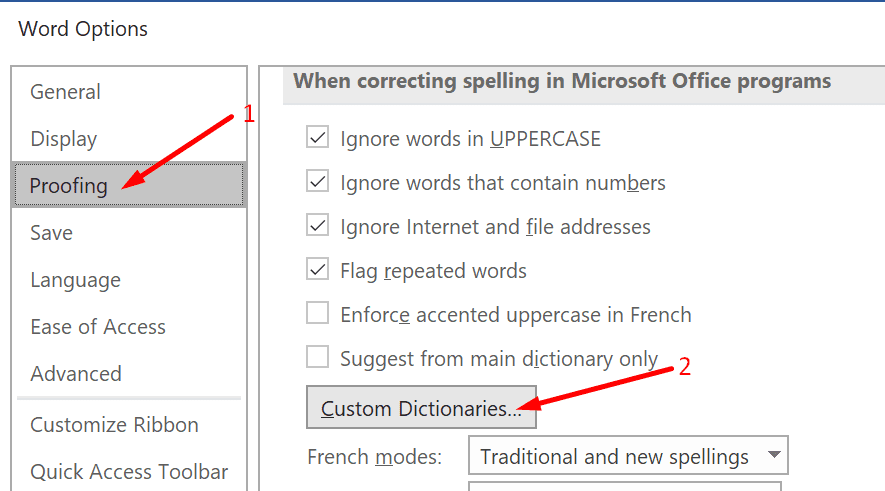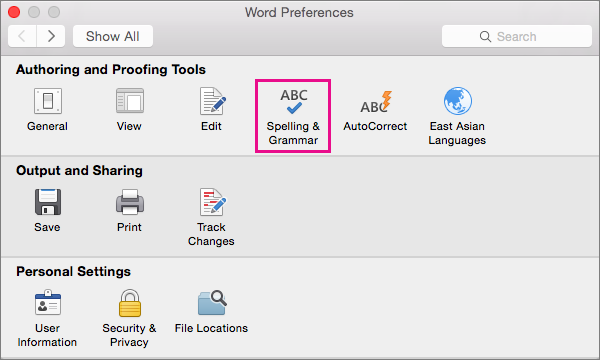
If your dictionary shows up in the dialog box, click it once.

Word displays the Custom Dictionaries dialog box.

Third, the problem could be due to actual corruption of the custom dictionaries. (That is covered in the tip entitled Pasting Text in a Specific Language.) If it is your problem, then you can fix it by simply changing how you paste information. You can verify if this is the problem by looking at the language associated with a problem paragraph or word. However, if the paragraph you pasted is designated in a different language (such as UK English), then the US English custom dictionary is never consulted when doing the spell check. To provide a simple example, you could have added a word to the US English custom dictionary. Custom dictionaries are tied to specific languages. Second, it could be that the information you are copying and pasting isn't recognized as being in the correct language for your custom dictionary to work. If you suspect this is the case, copy everything from the suspect document-except the final paragraph mark in the document-to a brand-new document. Document corruption doesn't always make the document in question inaccessible it may just make the document act erratically from time to time. If you can narrow it down to a set of suspect documents, then there is a chance that those documents are corrupted in some way. (Intermittent problems are some of the most vexing.) That being said, there are a few things you can check out.įirst, you should try to determine if this happens with only a given document or subset of documents that you work with. The fact that this behavior doesn't happen all the time makes it particularly bothersome to try to track down. He further notes that the words are not immediately lost from the dictionary it usually happens after some months. However, the marked words are ones that Fred previously added to his custom dictionary, which makes him wonder why Word doesn't hold onto those words he previously added. In most cases, the settings that you choose in Pages, Numbers, or Keynote override the system setting on your device.Fairly frequently Fred has a document, usually consisting of copied and pasted paragraphs, that shows certain technical words as unknown (underlined and prompting to check spelling or add to custom dictionary). Some iWork settings are similar to other settings on your iPhone, iPad, or Mac.


If you change a setting in another menu, your auto-correction settings change too. Some options might also be available in other menus within iWork. If you are using iCloud Keychain, each app’s settings are shared across all your Apple products signed into your iCloud account.


 0 kommentar(er)
0 kommentar(er)
